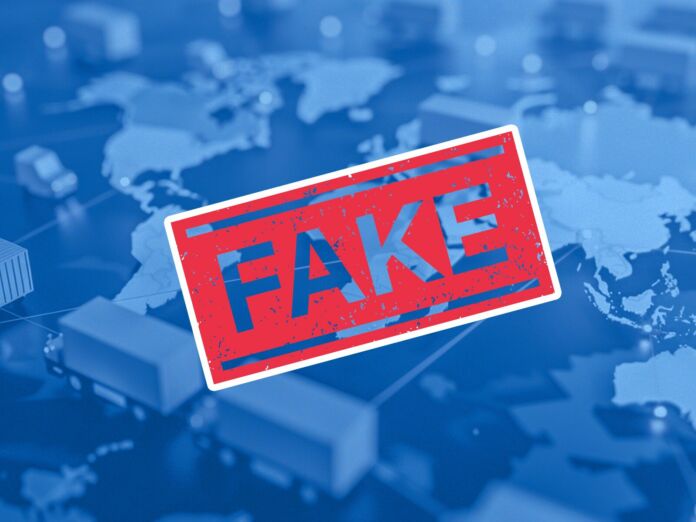
Zac Amos – July 25, 2024
Collected at: https://www.iotforall.com/using-iot-to-combat-counterfeits-in-the-retail-supply-chain
Retail products move from suppliers and through distributors to reach shelves. Somewhere along the way, counterfeit goods slip in. Theses counterfeits show up across the retail supply chain in major stores, online marketplaces, and flea markets. Whenever this happens — and it happens often — businesses have to eat the cost of shipping and disposing of the fakes. They also lose out on potential sales.
Counterfeiting is a huge issue in retail. Lately, factors like online shopping have only made it worse. Retailers need something that lets them track their shipments, detect fakes, and validate product authenticity in real-time. Is the Internet of Things (IoT) the solution they’ve been searching for?
1. Embedded IoT Devices
Online shopping has become a massive source of counterfeit retail goods across the supply chain. According to the Office of the U.S. Trade Representative, inadequate action by e-commerce companies that sell foreign products to American consumers is the greatest counterfeiting risk currently facing this country.
Amazon, widely accepted as the leading e-commerce company, spent over $1.2 billion and hired over 15,000 people to prevent counterfeiting and fraud in 2023 alone. Despite these efforts — and monumental investments — critics say the issue persists. The abundance of brands like “SHSTFD” or “ZGGCD” on the platform highlights the problem’s severity.
Fortunately, e-commerce companies can embed IoT devices into their trucks to track how long they stop, where they go, and how frequently they open the back. This way, they may be able to find the source of the counterfeits, permanently putting a stop to the fraudulent fronts that keep popping up.
2. IoT Sensors
IoT sensors can sense vibration, speed, humidity, pressure, tilt, and proximity, among other things. Businesses can place them on palettes or in boxes to tell when items are moved, swapped, or tampered with. These remote sensing devices update in real time, enabling them to catch bad actors in the act.
There are many ways to use IoT sensors in the retail supply chain to creatively catch would-be counterfeiters. For example, companies can mark genuine products with ultraviolet (UV) — which is invisible to the human eye — and equip a conveyor belt with a UV sensor. This way, they catch any fakes before the shipment reaches its destination.
3. IoT-Enabled Blockchain
Retailers’ general acceptance of disreputable vendors helps counterfeiters. Their reliance on unreliable third-party suppliers is one of the leading reasons for their current supply chain issues. When they do business with untrustworthy companies — whether to save money or because they didn’t do their due diligence — they make counterfeiting more likely.
An IoT-enabled blockchain is a distributed ledger that records every bit of sensor-generated data. Each node it creates is tamper-proof and follows a consensus mechanism, making it accessible and visible to all involved parties. Since this technology can handle a high transaction volume, it can scale with retailers’ needs.
4. LoRaWan IoT Technology
Long-range wide-area network (LoRaWAN) technology is a low-power, long-range networking protocol designed for IoT. It allows internet-connected devices to communicate over long distances, which is useful for tracking products outside the immediate area around their stores or distribution centers.
LoRaWAN-enabled IoT devices can track assets while monitoring the state they’re in. This technology’s high transmission range makes receiving updates easier, helping retailers know where their shipments are as they move from suppliers to store shelves. It’s beneficial for regional or national networks that contain numerous internet-connected devices to detect counterfeits across the retail supply chain.
5. AI-Powered IoT Surveillance
Internet-connected cameras are edge devices — they collect and process locally to lower latency and exchange data in real-time. Their built-in sensors can supplement recordings, adding helpful context to video files. This abundance of information becomes critical when integrated with a machine-learning model.
Artificial intelligence-powered IoT surveillance systems can detect minor differences and slight defects in retail products through every stage of the supply chain. According to one study on supply chains, AI reduces fulfillment mistakes by 25% and accelerates deliveries by 6.7 days on average. When integrated into a camera, it can analyze video, audio, infrared, and motion to detect counterfeits.
6. IoT-Enabled RFID Tags
Radiofrequency identification (RFID) tags use electromagnetic fields to track the people or products they’re stuck on. A reader wirelessly connects to their miniature antennas to read data — encrypted information that is impossible to understand or replicate. Usually, these tags are no bigger than a fingernail.
When embedded into an IoT device, RFID technology can tell businesses precisely who is doing what and when they’re doing it. Management could track employees’ movements, enabling them to narrow down when counterfeit products enter their supply chain. Alternatively, they could attach tags to products and use a weight sensor to track tampering.
Can Retailers Put a Stop to Counterfeiting for Good?
Counterfeiting has been an issue in retail for decades. As the industry has evolved from small mom-and-pop shops to international chains that ship products from overseas, it has only gotten harder to catch and trace. If businesses don’t figure out an effective solution now, they may be fighting a losing battle.
What’s more, fake goods only benefit the counterfeiter. This problem costs retailers sales — and the government tax revenue — while tricking consumers into using their hard-earned money on subpar products. Luckily, the IoT offers a solution to everyone impatiently waiting for a solution.
While it’s impossible to predict with much certainty how counterfeiting could evolve decades from now, there’s a strong chance that IoT asset tracking solutions will be able to curb the issue now. Being able to see real-time, context-driven updates as shipments move through the country could be a game-changer for retailers.

Leave a Reply